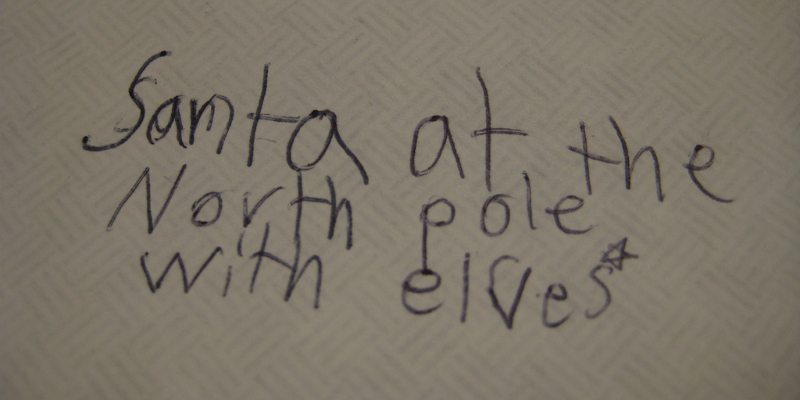
The Universal Postal Union, a specialized agency of the United Nations, counted more than 6 million letters to Santa Claus sent in its most recent, 2007 survey. But in the immortal words of Austin Powers, “Whoop-de-doo! What does it all mean, Basil?” ‘Tis the season of nostalgia and so, to discover the meaning of kids’ Santa Claus letters, we turn to the ghost of Christmas past, namely a 1994 study published in the Journal of Popular Culture that mined 614 letters to Santa Claus delivered through the post office of a major city in the U.S. Southwest.
After chucking all the letters that were obviously written by an adult for a child, those that were illegible, and those that were deemed to be gift lists written by adults pretending to be children (imagine the implications…), the researchers from the University of Illinois Urbana-Champaign were left with exactly 344 notes — written by children expressing their deepest desires.
In these 344 letters were 2,475 gift requests for an average 7.2 gifts per letter — boys requested slightly fewer at 6.7 and girls slightly more at 7.7 per child. Almost exactly half of these were branded requests — not just a talking doll, but a “Tickle Me Elmo” and not just a magic kit but the “Magic Circle Deluxe Box of Tricks” and not just laser tag guns but the “Sega Lock On” system. Interestingly, the longer the list, the higher percentage of the items likely to come with specific brand requests.
Here’s another interesting part: despite a fairly equal number of brands available to boys and girls, and despite a fairly equal percentage of toys requested by brand name by boys and girls, boys tended to cluster their requests in only the top few brands, while girls spread their brand requests over a wider range of brands.
“Boys may be more concerned that the brand-named gifts they request are more popular (and thus more desired) among their peers,” the authors write.
That said, while girls spread their love among brands, they did not spread it among categories of toys, with the vast majority of requests from this (hopefully bygone…) era being for dolls or for “New Kids on the Block,” which the researchers note were “themselves dolls that represented the individual band members.” (Another note: an eBay search returns a full set of 5 NKOTB action figures still in packages selling for $60, and you can buy just Dannie and Donnie now for $13.19!) Girls were also more willing to cross the gender boundary than were boys, with 49 requests for “boy brands” from the girls and only 4 requests for “girl brands” from the boys.
Does all this mean that “boys are more concerned with acquiring popular, brand-name items than girls?” the researchers ask. Are boys and not girls more bound by the perceptions of what they “should” want? Or are boys more susceptible to the advertisements of the big brand names, which did, in fact, receive the lion’s share of the brand requests?
“Given that the Santa Claus myth appears to be an integral — and perhaps even sacred — part of the celebration of Christmas in American culture, studies exploring the issues raised in this study would certainly seem warranted,” the researchers write.
God bless us, everyone.


